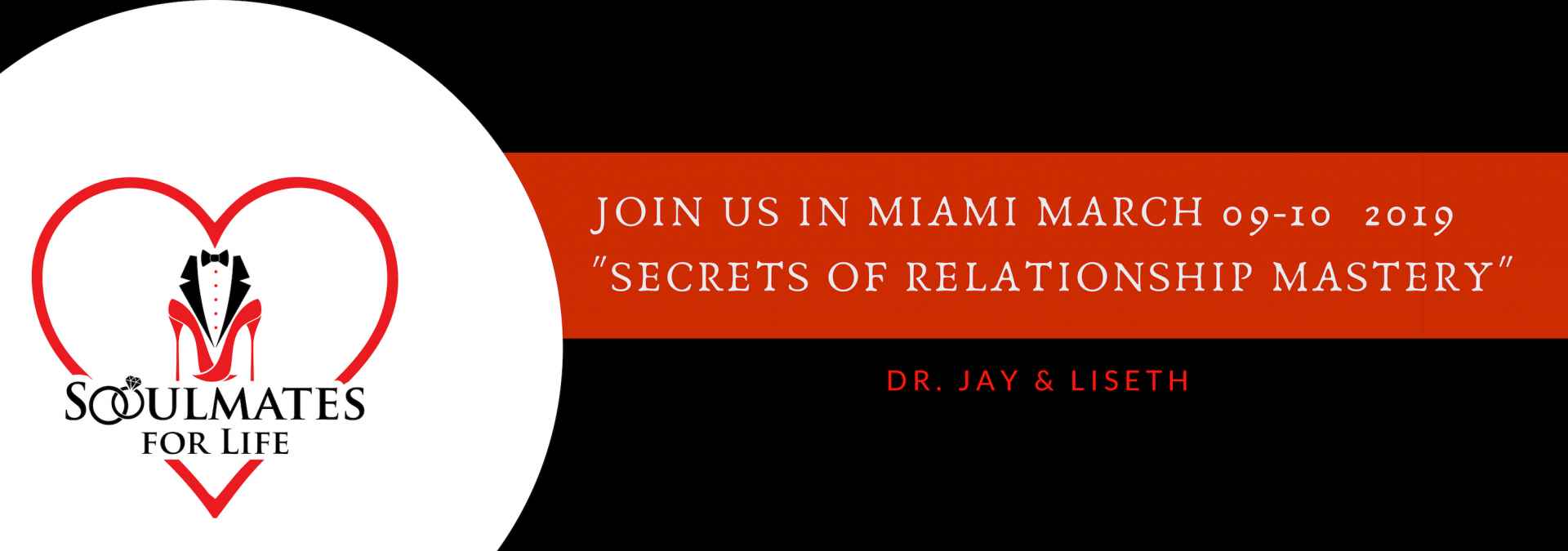Smart Erotica: The 7 Conversations of LIC #3: Conflict


In our article Smart Erotica: The Modern Couple's Playbook we outlined seven conversations that our Lifestyle Inventory Check-up (LIC)© coaches couples to have to ensure a fun and productive erotic lifestyle experience.
The LIC guides you through a series of essential discussions that include the following:
- Alignment
- Unfiltered Communication
- Conflict (you're here)
- Sexuality vs. Eroticism
- Boundaries
- Agreements
- Routines & Rituals
Regardless of where you are on the erotic lifestyle continuum — from newbie to veteran, hot monogamy to CNM or even polyamory — the LIC and its “7 conversations” are essential tools that keep your relationship safe and lay the foundation for romantic pluralism that is quickly going mainstream in our culture with just over 20% or 1 in 5 people participating in a “consensual non-monogamous relationship” (Kinsey Institute and Journal of Sex and Marital Therapy, 2016).
“Anybody can become angry — that is easy, but to be angry with the right person
and to the right degree and at the right time and for the right purpose,
and in the right way — that is not within everybody's power and is not easy.”
– Aristotle
We believe people know how to talk, but they don’t know how to communicate, and not understanding the difference can be deadly to your relationship. This is especially true if you open the boundaries of monogamy and expose your relationship to consensual non-monogamy, where the territory is much more complex, dynamic, as well as uncharted.
In the erotic lifestyle, if you have conflict in your relationship, you are likely to experience more of it as latent problems get magnified. If you don’t have a lot of conflict, it’s likely you will be experiencing some because when you stretch the upper limits of personal boundaries and change your model of relationship, conflict is often a natural outcome. Take heart and stay tuned as we explore the truth about Conflict — its role in love and the why, when, and how to do it well based on the art and science of love to enrich your relationship rather than implode it.
Conflict Can Be Necessary & Positive IF You Do it Right
There’s a big difference between “fighting” and “conflict.” When you go to a fight, you are out to win through dominance where one exerts their supremacy physically, emotionally and/or intellectually over another. By contrast, conflict is about reconciling differences and seeking to fulfill needs within the context of a common goal in pursuit of a collaborative outcome, or at least, that is what it can be inside of an intimate relationship. Most couples “fight” and never experience positive “conflict” where vulnerability, growth, and learning can happen.
Conflict is NOT BAD, should not be avoided and IS inevitable in every relationship where human beings are involved. We believe conflict is growth seeking to happen in the form of an unmet need trying to express itself. In fact, there are some very counterintuitive facts proven by psychological science that tell the real story, and potential value of conflict.
One of our richest professional experiences has been the privilege of knowing and working with Dr. John Gottman who has spent four decades conducting the most extensive and detailed research of anyone in the field on global samples following some couples for over 30 years to answer the question: “what makes marriages succeed or fail?”
In fact, Dr. Gottman is famously noted as the researcher able to predict within 3 minutes of a 15-minute conversation with a 90% accuracy rate whether that couple will divorce or not. He identified four behaviors we will discuss next (The 4 Horseman of the Apocalypse) that can consume a relationship and lead it to end an average of 5.6 years after the wedding if they are present!
And The Science Says…
1. Conflict is Inevitable and a Constant Part of Being in Relationship: Research on marriages that last longer than ten years and where people are happy and satisfied (they still like each other) shows that successful relationships have a lot of conflict — often about the same issues over time. Thus, when you choose a partner, you are also choosing a particular set of problems. So, rather than trying to change your partner, you better learn some new and creative dance steps! (Dan Wile, After the Honeymoon, 2008)
2. Most Conflicts Will Never Be Resolved: 69% of the issues couples fight about will continue for the duration of their relationships. When thinking about conflict in a relationship, it is important to ascertain whether a problem is solvable or perpetual. Dr. Gottman’s research has shown that 69% of relationship conflict is about perpetual problems. All couples have them — these problems are grounded in the fundamental differences that any two people face. They are either core differences in your personalities that repeatedly create conflict or fundamental differences in your lifestyle needs and values.
3. All Conflict is NOT Created Equal; Some Conflict is Toxic to Your Relationship: In the “Love Lab,” Dr. Gottman and his team of researchers discovered a pattern of four behaviors that were especially toxic to marriages leading to almost certainty that those relationships would end in divorce.
If you do any of these, STOP IT and DO the anecdote below!
CRITICISM – Criticism is a personal attack against your partner’s character where you focus on their faults, chronically complain and are negative about them. This is very different than a complaint. When criticism becomes a habit, it can create escalating conflict that can damage a relationship. It creates a lack of safety in the relationship.
ANECDOTE: Ask for what you want by making specific requests.
DEFENSIVENESS – Defensiveness is where you blame, take no responsibility, and make your partner wrong for things without owning your contribution to them. Defensiveness is a natural response to being attacked and is essentially when you shift blame from you to your partner. It is always a two-way street created by both partners. There are two forms of defensiveness: counterattacking and acting like an innocent victim.
ANECDOTE: Take responsibility and own your contribution.
STONEWALLING – Disengaging, withdrawing, putting a wall up and working in a silo. Stonewalling happens when your partner feels so overwhelmed and helpless about conflict they just shut down and close themselves off from you. This lack of response often escalates the issue further.
ANECDOTE: Calm down, slow the action and Turn Toward vs. Turn Away.
CONTEMPT – Disrespect, disdain, and dishonor toward another. Contempt is a harmful form of disrespect. This includes mocking your partner with sarcasm, ridicule, name-calling, mimicking, and/or using dismissive body language such as eye-rolling. Doing this makes your partner feel inferior, despised and worthless.
ANECDOTE: Demonstrate honor and respect as an act of grace and unconditional love.
4. Conflict itself is NOT the Problem; The Absence of Repair is: Conflict, per se, is never the problem! The absence of repair (reconnecting, working through an issue to mutual understanding) when a conflict occurs IS a problem. A research study that followed 168 couples for 13 years discovered that the number one predictor of why couples divorce was not how often the couple fought, but how little affection and emotional responsiveness they offered one another (Huston & Caughlin, 2001, Journal of Personality and Social Psychology). In fact, the purpose of all conflict is to meet unmet needs within the primary relationship. More specifically, the goal of conflict is emotional intimacy and connection.
5. “How” You “Conflict” Is More Important Than Having Conflict: It is never that you have conflict (if you didn’t there would be no passion between you and you have a dead relationship); it’s always “how” you do conflict that determines if it is toxic or a catalyst for growth. Dr. Gottman found that the most obvious indicator that a conversation is not going to go well is the way it begins. His research shows that 96% of the time a conversation ends negatively because it starts negatively. Start “soft” and gentle vs. “harsh” and straight to the point and ask permission “If this is a good time to chat or not?” This shows respect and is an act of love.
Coaching Conflict: Eric and Rosemarie
Now that we have put “Conflict” into a context that proves it’s not dangerous to your relationship and can be positive, we are going to coach you on the conversations and questions you need to ask yourself and your partner as you navigate potential conflict in the erotic lifestyle. These are the tools of the Lifestyle Inventory Check-up (LIC)© designed to support you in being in the right conversation about the right issues in the right ways.
Meet Eric and Rosemarie, a couple we are currently working with who sought our assistance due to chronic conflict and were on the brink of a divorce when they arrived. A solid relationship for seven years, both in their early 50s, she a small business owner with a successful cosmetics line, and he an entrepreneur who sold a technology company a few years ago and is semi-retired. Eric was a veteran to the lifestyle and Rosemarie agreed to “try out swinging,” knowing that this would be the only relationship model Eric would be content in. They had several key missing conversations, and each had a very different agenda and purpose for what role the lifestyle had in their relationship. However, neither of them knew exactly what the other's was, nor the extent to which they were not aligned. Until, on a lifestyle cruise, Eric actively pursued contact with a person of interest, assuming he had Rosemarie’s consent to do so (he had “intention,” not “consent”). A serious conflict ensued, revealing the core underlying issues: Eric was interested in polyamory and seeking emotionally-committed relationships with select partners; Rosemarie was open to swinging with select partners who they did not necessarily see again. These models of relationship are as different as Islam and Christianity and, absent the toolbox we are giving them to communicate and engage in positive conflict, they would no longer be together, becoming a divorce statistic with the Four Horseman of the Apocalypse trampling through their marriage.
In successfully dealing with Conflict, it is important to understand where it comes from. We are living amidst a cultural shift not seen before: For most of recorded history, relationships were dictated by communal norms that determined rules, roles, and recipes for everything from child-rearing to decision-making on where to live and how-to budget. Today, those prescriptive structures have dwarfed in influence and the rules are literally being made up as we go. This is especially true in the erotic lifestyle where YOU HAVE TO MAKE YOUR OWN RULES and NEGOTIATE fairly a complex and dynamic social map that is not charted for you.
A primary source of all conflict is who has power and control over important decisions that impact the relationship. In the absence of clear norms and rules of engagement, we are often left with our social conditioning and blurry models for how to Negotiate the Balance of Power within relationships. Men have been socialized to take control, be in charge, find solutions and, in general, take action. Women, generally speaking, are oriented around connection, awareness of emotional nuance, and the importance of feelings as relevant data points and information — yielding, harmonizing, and collaborating versus competing. Eric was following his social conditioning and assumed he had both alignment and permission to pursue his interests, believing “they had already discussed it.” Rosemarie falsely assumed they “were in the process of talking about it,” but had not come to a conclusion yet when the person of interest showed up with Eric for an unscheduled dinner meet-n-greet, which did not go as planned! Couples know how to “talk,” they do not know how to “communicate.”
Let’s follow the science again, shall we? In a 9-year study of 130 newlywed couples, Gottman and his research team found that men who allowed their wives to influence them had a happier relationship and were less likely to divorce than men who resisted their wives’ influence. Statistically speaking, when a man is not willing to share power with his partner, there is an 81% chance that his marriage will end in a divorce.
The key ingredient to successful conflict resolution, then, was being Open to Influence by Yielding to Win and sharing power equally between partners. This was viewed as a tangible way to demonstrate honor and respect for one another compared to sharing words and sentiments — reciprocity matters in love. Eric was slow to understand this, and Rosemarie was slow to assert her legitimate power, both being conditioned by a Latin culture where the unwritten rules are men do what they want and woman begrudgingly comply, simmering in silence or over a Starbucks latte with a girlfriend. The happiest, most stable marriages in the long-term were those in which the husband did not resist sharing power and decision-making with the wife. They actively searched for common ground (compromise) rather than insisting on getting their way.
Questions to Ask Yourself, First
- What do I want our “monogamy agreement” to look like?
- What values are most important to me in exploring the erotic lifestyle together?
- What areas have I felt uncomfortable about and “pushed or pressured” into and need to talk about with my partner?
- Do I communicate passively or directly about sensitive topics? How’s that going?
- How directly do I ask for what I want or need?
- What can I do differently to be more direct in my communication? What can I request of my partner to do differently to support me and our communication?
- What do I do to make sure it’s safe for my partner to communicate with me, and to let them know it’s safe?
- Does my communication show that I take responsibility for my actions and emotions? If yes, how?
A Communication Practice to Resolve Conflict: Fierce Dialogue
During our Soul Mates for Life: Secrets of Relationship Mastery live event program, we teach a number of communication technologies that get couples to a level of mastery for navigating conflict. One of those tools is what we call, “Fierce Dialogue for Soul Mates,” and it’s a template for how to have a direct and candid conversation that is solution-focused, not problem-focused. This is an example of the tool and one you can use immediately to begin having the necessary conversations you need to as you navigate the erotic lifestyle together. Follow the template EXACTLY, and it will guide you:
Committed Speaking Template: Frame the Conversation
- “The issue(s) I think we need to talk more about as it relates to our erotic lifestyle experiences is/are” …
- “The reason this is important to me/us and why I want to talk about it is because” …
- “What I see in this is” … (Facts Only – Describe vs. Evaluate)
- “What I think about it is” … (your interpretation, beliefs, meanings, assumptions, story)
- “My feelings about the issue are … the impact it’s having on me is” …
- “What I know I contribute to this is” …
- “What I want/need/request from you around this is” …
Committed Listening Template: Being Present to Your Partner
The most challenging part of the Fierce Dialogue process is in A-T-U-N-I-N-G to your partner after they have shared. The key is to focus your attention on your partner’s experience and trust the process that you will have a turn and be heard. The more generous you are in DOING these five skills of A-T-U-N-I-N-G, the better your conversation will go. Until people experience your listening to them, you cannot influence them! Do EACH of the following skills to A-T-U-N-E:
A – Awareness through Acknowledgement (Say “I hear you … what I heard you say is” … )
& Validation (Say “That makes sense to me because” …)
T – Tolerance of two equal perspectives. Respect and appreciation for Multiple Realities.
U – Understanding means to inquire prior to influencing by asking questions. Suspend Influence/Give up Positions.
N – Non-Defensive Listening. There’s nothing to defend. Show Interest & Curiosity with Zero Judgement.
E – Empathize by taking notes (tune in) and invite more dialogue (curiosity). Ask, “Is there more?”
We've A-T-U-N-Ed. Now What?
If you completed the above process, you just took your first step in learning the dance of intimacy by learning how to do “positive conflict” — well done! A decision to engage your partner using science-based principles and practices is what emotionally intelligent couples do, and this is particularly important for those couples who venture out into the unknown of the erotic lifestyle.
The Smart Erotica Program© is a practical, common sense approach that systematically coaches participants through the “7 Conversations” of the Lifestyle Inventory Check-Up® (LIC), in the safety of a structured, confidential, professional methodology based on decades of relationship science and work with couples globally.
The program delivers an emotional and mental framework for being in the “right” conversations about the “right” issues in the “right” way to successfully navigate the delicate balance between love, sex, eroticism and sensual expression grounded in a relationship design of your choosing.
Live passionately,
Dr. Jay and Liseth
Soul-Mates for Life







